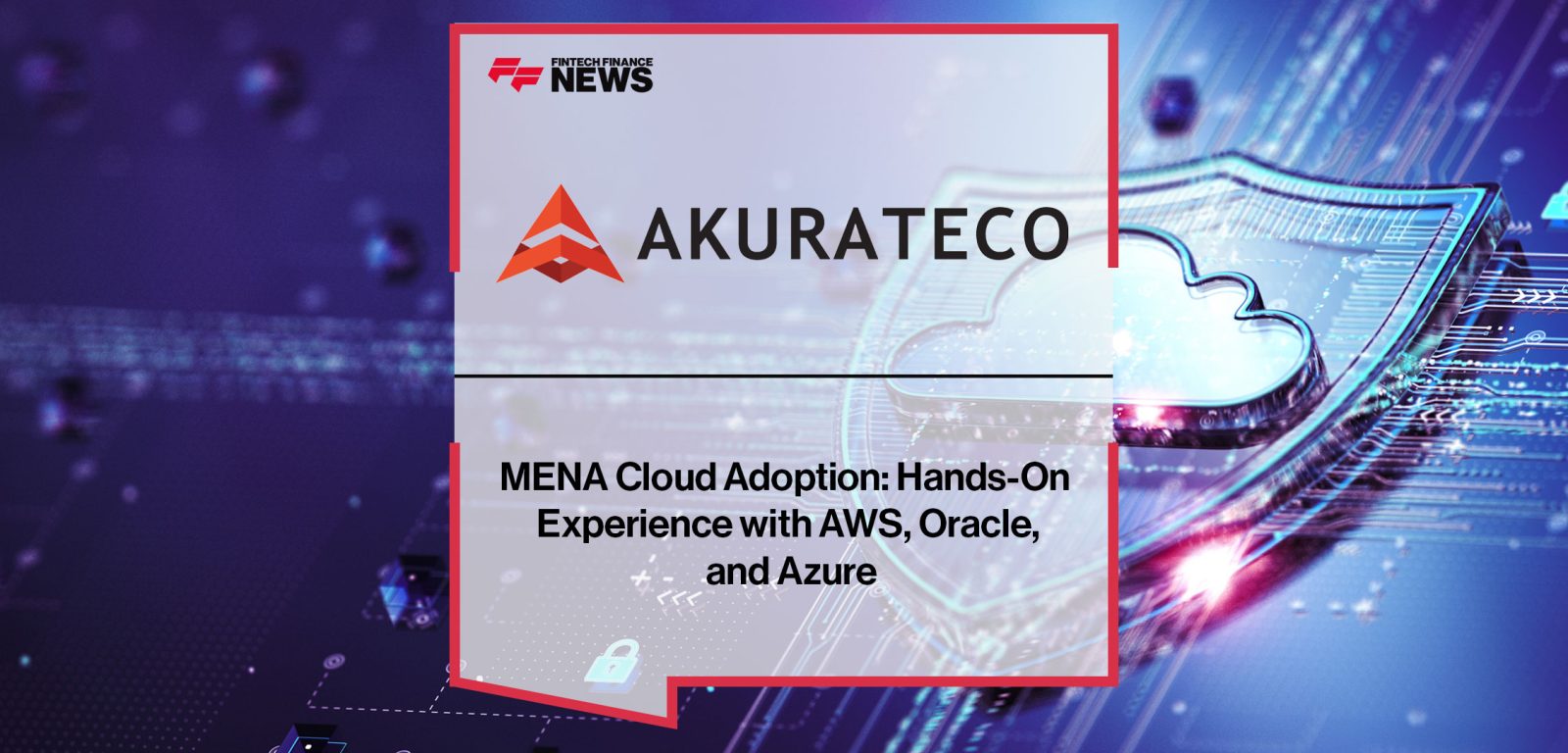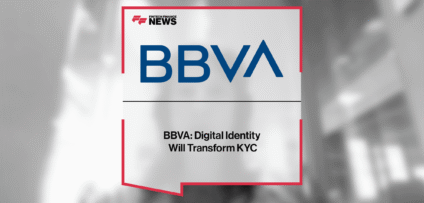Breaking News

MENA Cloud Adoption: Hands-On Experience with AWS, Oracle, and Azure
Today, cloud infrastructure is firmly establishing itself as an essential foundation for innovation and modernization in the Middle East and North Africa (MENA) region, transforming its digital landscape. According to the EMEA Cloud Business Survey 2023, 68% of Middle Eastern companies plan to migrate most of their operations to the cloud within 2024-2025. Fintech companies have been at the forefront of this transition. McKinsey estimates that fintech revenues in the MENAP region could almost triple, rising from $1.5B billion in 2022 to $3.5 billion-$4.5 billion by 2025, reflecting the sector’s pivotal role in the region’s digital transformation.
Why cloud adoption in MENA is more crucial now than ever before?
Global trends toward cloud migration continue to accelerate. Garter Research projects that the cloud will be the pervasive style of computing as early as 2027, preceded by the shift towards remote working, the potential for enhanced data analysis and cybersecurity, and the need for more efficient supply chains. However, in the MENA region, cloud adoption is not just influenced by global trends. It’s deeply rooted in local regulations and industry-specific factors, driving entrepreneurs towards cloud solutions.
Legislation on data localization
The primary reason behind increased cloud adoption is the implementation of stringent data localization laws throughout the region, including the Kingdom of Saudi Arabia (KSA), Oman, Qatar, and the United Arab Emirates (UAE), which require businesses to store certain categories of data within national borders. Major cloud providers like Amazon Web Services (AWS), Oracle, and Microsoft Azure offer region-specific data centers that comply with local data localization laws.
National transformation initiatives
Another driving force is the national transformation visions set by Middle Eastern countries, such as Saudi Vision 2030 and the UAE Centennial 2071, which set clear goals for technological progress. Cloud services are central to these initiatives as they enable businesses to streamline operations, boost efficiency, and foster innovation.
Enhanced cloud infrastructure security and cost-efficiency
Enhanced security and cost-efficiency contribute to cloud adoption. With major investments in cybersecurity, data protection, and disaster recovery, cloud providers offer an unparalleled level of security and compliance that is difficult to match with on-premises solutions. Additionally, clouds provide a cost-efficient alternative to building and maintaining physical infrastructure. Their pay-as-you-go model allows businesses to scale up or down effortlessly based on demand, reducing upfront costs and financial risks.
Rapid growth of e-commerce and fintech
The expansion of e-commerce sparked by the Covid-19 pandemic is also a factor. According to Boston Consulting Group, the e-commerce market in Saudi Arabia grew by nearly 60% in 2020 and is projected to reach SAR 50 billion by 2025. This boom in online retail has triggered high demand for fintech solutions. Many of them migrate to the cloud rather than rely on dedicated infrastructure, as clouds support microservice architectures and provide more reliable solutions for network speed, stability, and scalability. Among the fintechs that have migrated their infrastructure to the cloud is Akurateco.
A hands-on look at cloud adoption in MENA: Akurateco’s migration to AWS, Oracle, and Azure
Global white-label payment software provider Akurateco has embraced the shift by migrating its infrastructure to three major cloud providers: AWS, Oracle, and Azure. Operating in key MENA markets, including Saudi Arabia, Qatar, UAE, and Egypt, Akurateco searched for cloud solutions that both complied with local data residency laws and delivered cost efficiency to meet its clients’ budget constraints. AWS, Oracle, and Azure were chosen for their ability to balance regulatory demands while offering scalable, secure, and budget-conscious infrastructure solutions.
Architectural insights: Comparing cloud implementations
Product Owner at Akurateco, Viktor Osadchuk, pointed out that while cloud installations across AWS, Oracle, and Azure shared many similarities, AWS stood out with its extensive use of native subscription-based (SaaS) services. Services like Amazon’s Relational Database Service (RDS) and OpenSearch, both offered as fully managed SaaS, allowed Akurateco to transition from in-house solutions seamlessly. It simplified the migration process and helped reduce costs and complexity, allowing the company to transition smoothly from custom-built solutions to subscription-based models, minimizing complexity and cost.
Universal cloud architecture across platforms
Akurateco’s cloud strategy was rooted in flexibility and efficiency. “By designing a universal cloud architecture, we avoided platform-specific solutions that might limit our scalability or lead to higher maintenance costs. This approach enabled us to deliver streamlined, cost-effective infrastructure across multiple platforms, maximizing value for our clients,” Osadchuk explained.
While AWS provides powerful SaaS tools like RDS and OpenSearch, Akurateco opted for self-managed solutions for Oracle and Azure. This decision ensured a consistent operational framework, making its infrastructure adaptable, cost-efficient, and primed for future growth — regardless of the cloud provider.
Choosing cloud services: Balancing efficiency with flexibility
When choosing cloud services, Akurateco’s primary objective was to strike a balance between cost-efficiency and flexibility while considering several critical factors. These included regional availability, which impacted how effectively certain cloud services could be utilized, particularly in specific MENA markets. For instance, some cloud services simply weren’t accessible in the regions where Akurateco operates, which limited their options and required careful evaluation.
Another major aspect was compliance, specifically regarding PCI DSS certification. “The absence of PCI DSS certification in some providers would make the certification process more complex for our clients,” Osadchuk noted. By selecting providers that were PCI DSS-certified, the company was able to streamline the certification process, as those providers addressed the physical access restrictions required for data centers.
Customization was also a vital consideration. Certain services lacked the necessary flexibility to meet Akurateco’s specific requirements. To overcome these challenges, the company leaned on a mix of subscription-based services for particular needs while opting for self-managed solutions in other areas.
For security and PCI DSS compliance, services such as Virtual Network Firewalls helped Akurateco better control traffic within its Cardholder Data Environment (CDE), Viktor added. To manage traffic flow between services, load balancers were employed, while Kubernetes SaaS provided an ideal ready-made solution for scaling and orchestrating Docker containers, offering built-in monitoring and automation.
However, the company also chose self-managed cloud solutions in certain instances. For example, clusters of virtual machines were used to handle specific functions. Akurateco grouped its infrastructure into mini-clusters — three virtual machines for processing database tasks in a Percona Cluster, another set for search and analytics with the OpenSearch Cluster, and a separate cluster for message queueing using RabbitMQ.
Other virtual machines supported the internal platform, adhering strictly to PCI DSS standards by isolating servers for particular functions. Key administrative tools, including Prometheus for performance monitoring, OpenVAS for quarterly security scans, and Wazuh for security information and event management (SIEM), were critical to ensuring the infrastructure’s operational integrity.
As Viktor emphasized, “By balancing efficiency with flexibility, our cloud infrastructure not only meets current demands but also adapts seamlessly to future needs in the MENA region’s fast-paced, evolving digital landscape.” This approach has allowed Akurateco to remain agile while maintaining high standards of security, compliance, and operational efficiency.
Cloud installation numbers & results
By leveraging a microservices architecture and utilizing cloud infrastructure for hosting, Akurateco has achieved significant results in terms of scalability, performance, and cost efficiency. A key outcome is the transaction processing rate, which now averages between 140-150 transactions per second, equating to about 350 million transactions per month. What’s remarkable about this setup is its flexibility — the rate can be adjusted up or down depending on demand, allowing the company to scale its cloud instances dynamically, resulting in notable cost savings.
Akurateco has also benefited from automated traffic balancing, ensuring load distribution remains even and operations run smoothly without manual intervention. Viktor Osadchuk noted that the platform’s high uptime is another standout achievement. “Due to the reliability of our cloud providers’ infrastructure and built-in recovery mechanisms, we’ve been able to maintain seamless operations,” he said. This stability has been instrumental in meeting the uptime requirements of clients operating in the fast-paced MENA markets.
In addition to system reliability, Akurateco has reduced the need for human intervention in system maintenance through advanced monitoring and automation tools. This shift has allowed for a leaner operational structure, freeing up human resources to focus on innovation and further enhancements.
Costs and differences in implementation
Despite these advancements, one noticeable difference across cloud implementations is cost. For instance, the Azure setup runs at approximately $5,400 per month, while Oracle costs around $1,600 per month. However, Viktor emphasized that “performance remains comparable across these cloud platforms, allowing us to tailor our solutions based on our clients’ specific needs and budgets.”
Roadmap: Toward a cloud-first future
As MENA businesses navigate evolving regulations and ambitious national transformation goals, the shift to cloud infrastructure is not just a trend but a strategic necessity. Driven by the growing need for flexibility, cost optimization, and scalability, the cloud is poised to reshape industries and redefine the digital landscape. Akurateco’s experience in migrating to AWS, Oracle, and Azure demonstrates that embracing the cloud not only meets current MENA’s fintech market demands but also positions businesses to drive future growth. As regional industries continue to transform, those who lead the charge in cloud adoption today will be well-positioned to benefit from the innovations of tomorrow.
Companies In This Post
- How USAA Builds Digital Experiences Around Its Members Read more
- Spayce: Organic Growth, Own Tech, New Wallet Read more
- EXCLUSIVE: “Check, Check… and Check!” – Pilar Fragalà, CBI in ‘The Fintech Magazine’ Read more
- BBVA: Digital Identity Will Transform KYC Read more
- Pocket Network Is Pioneering ‘DePIN for Data’ Read more

















